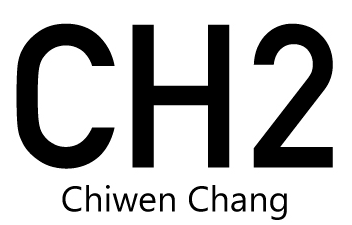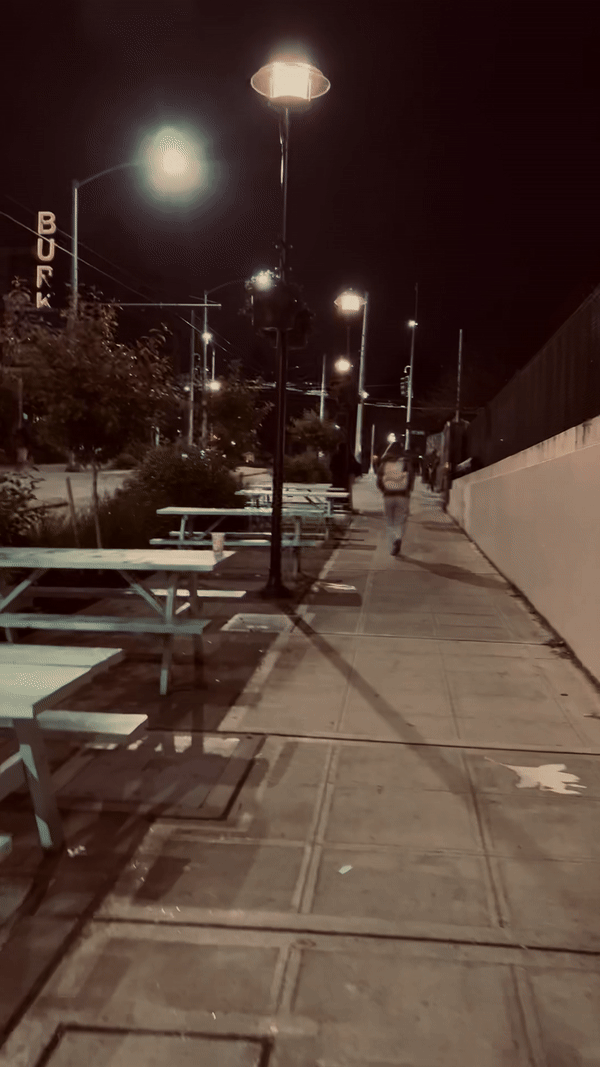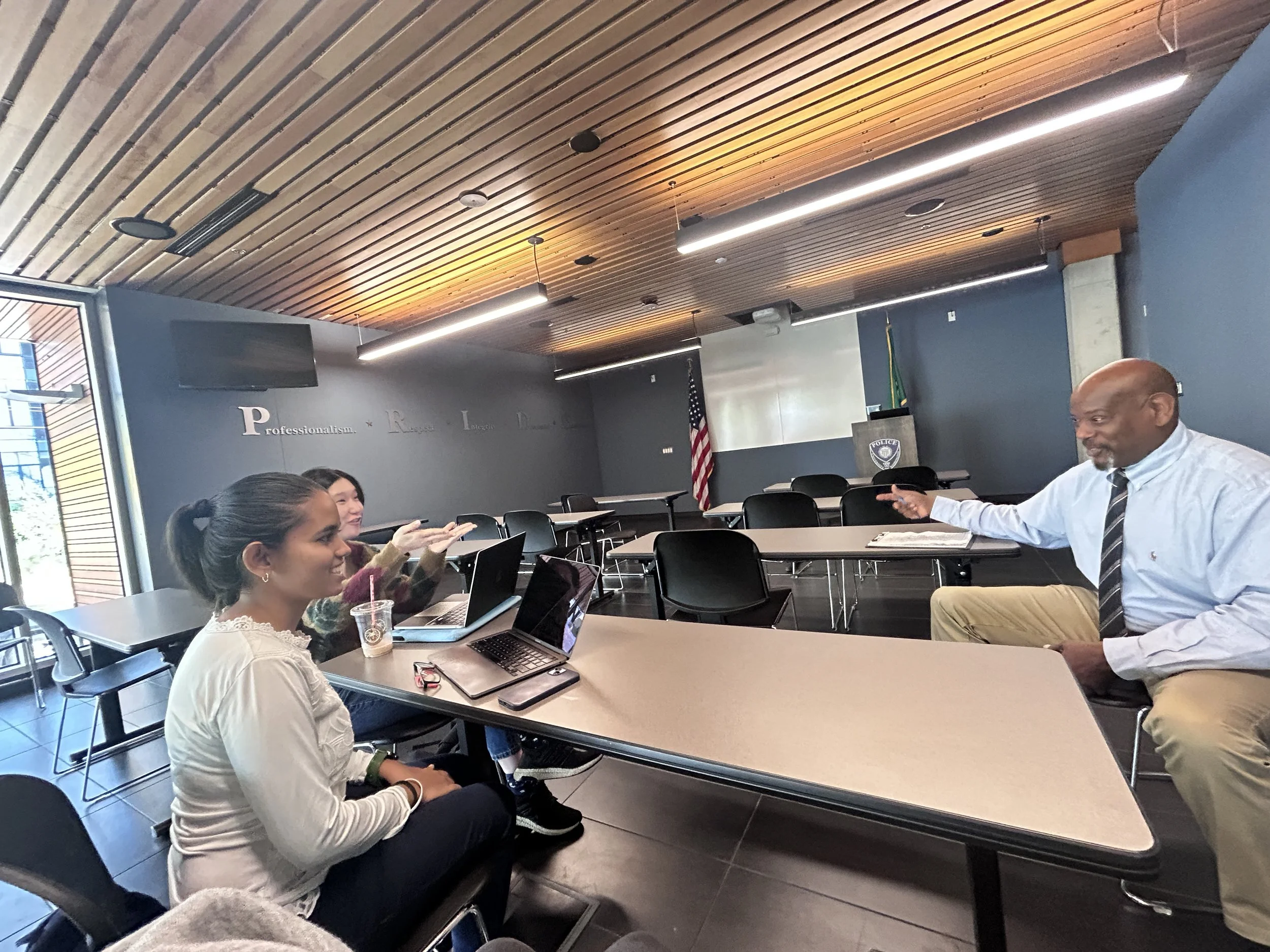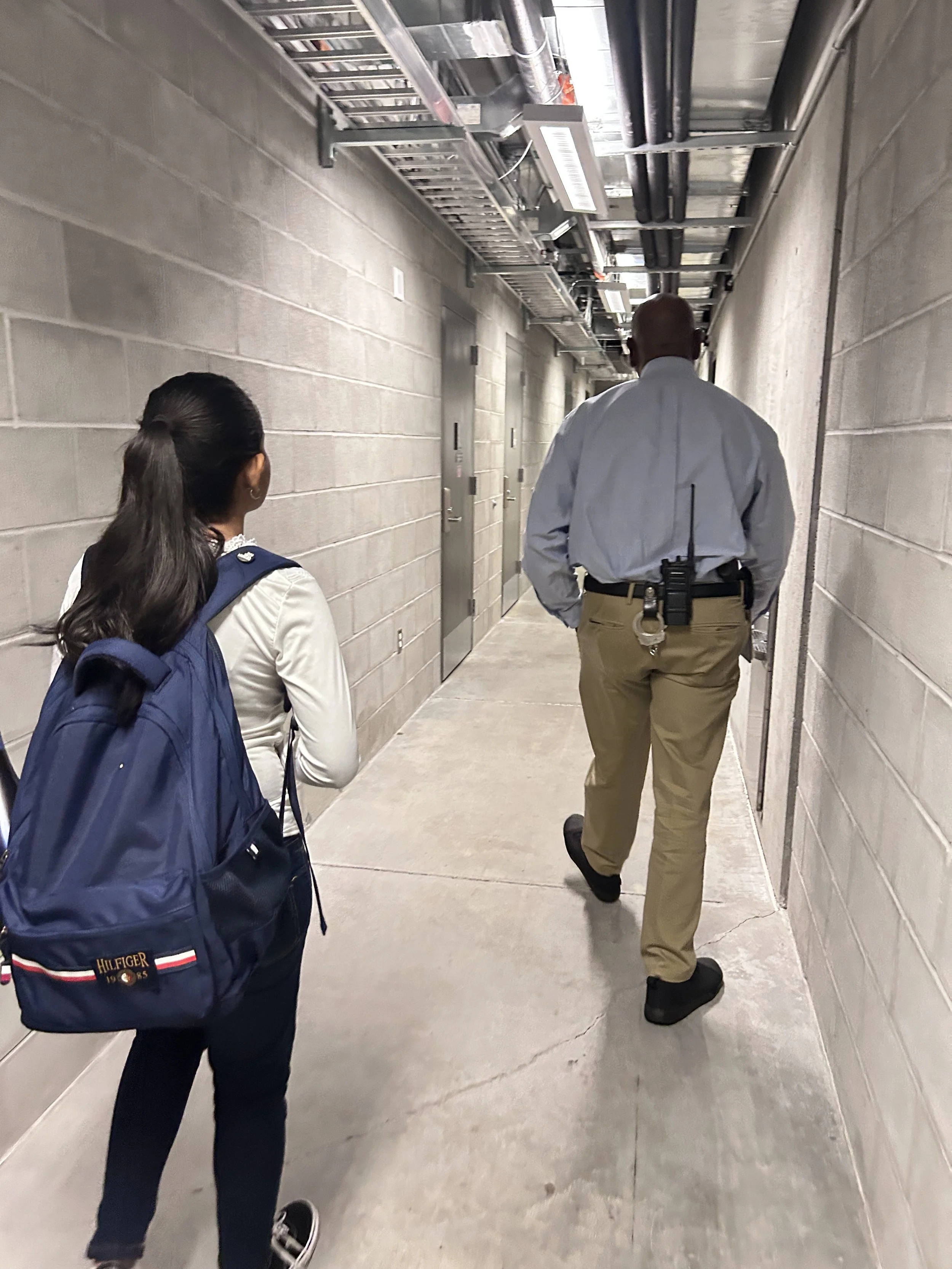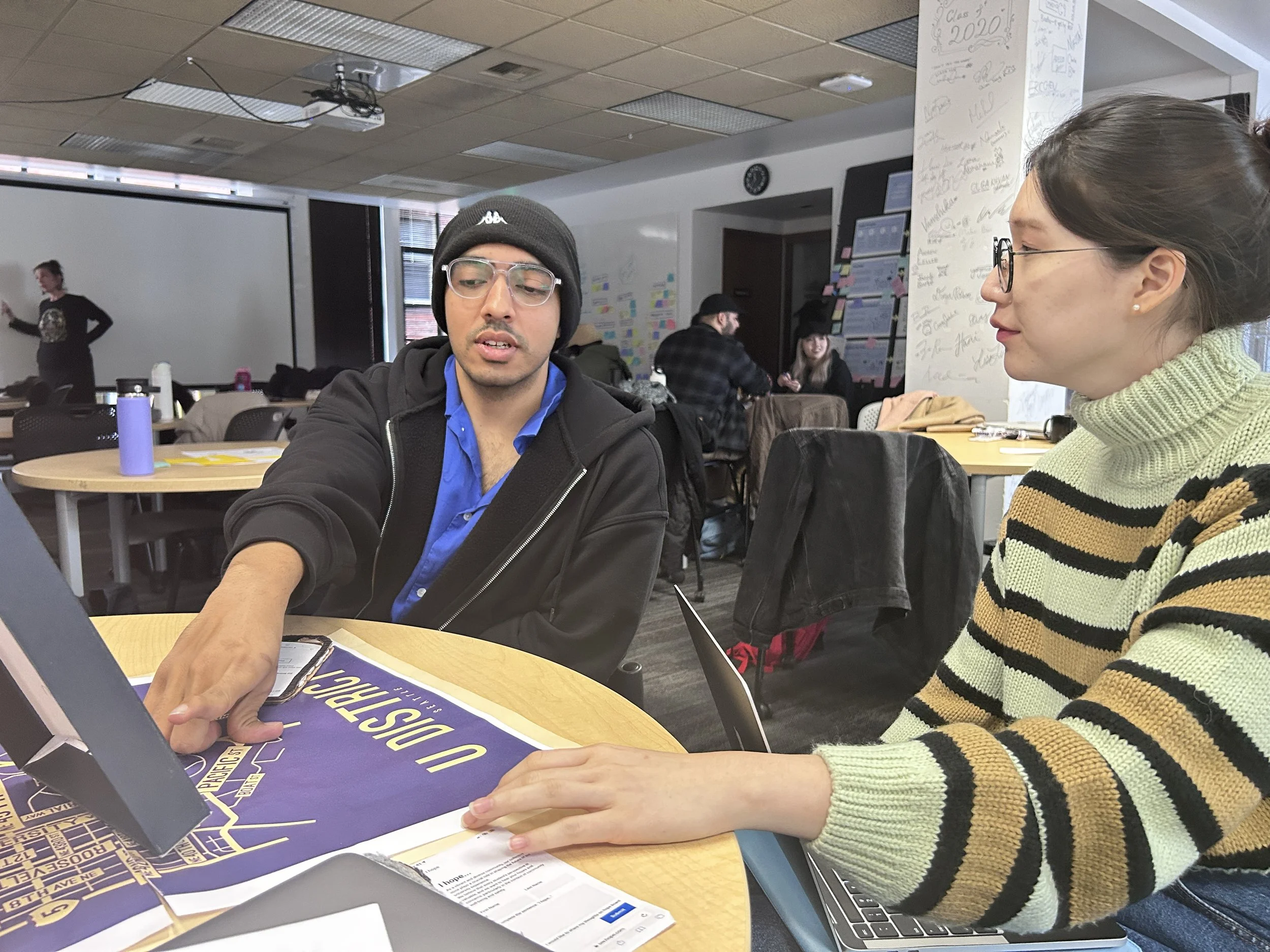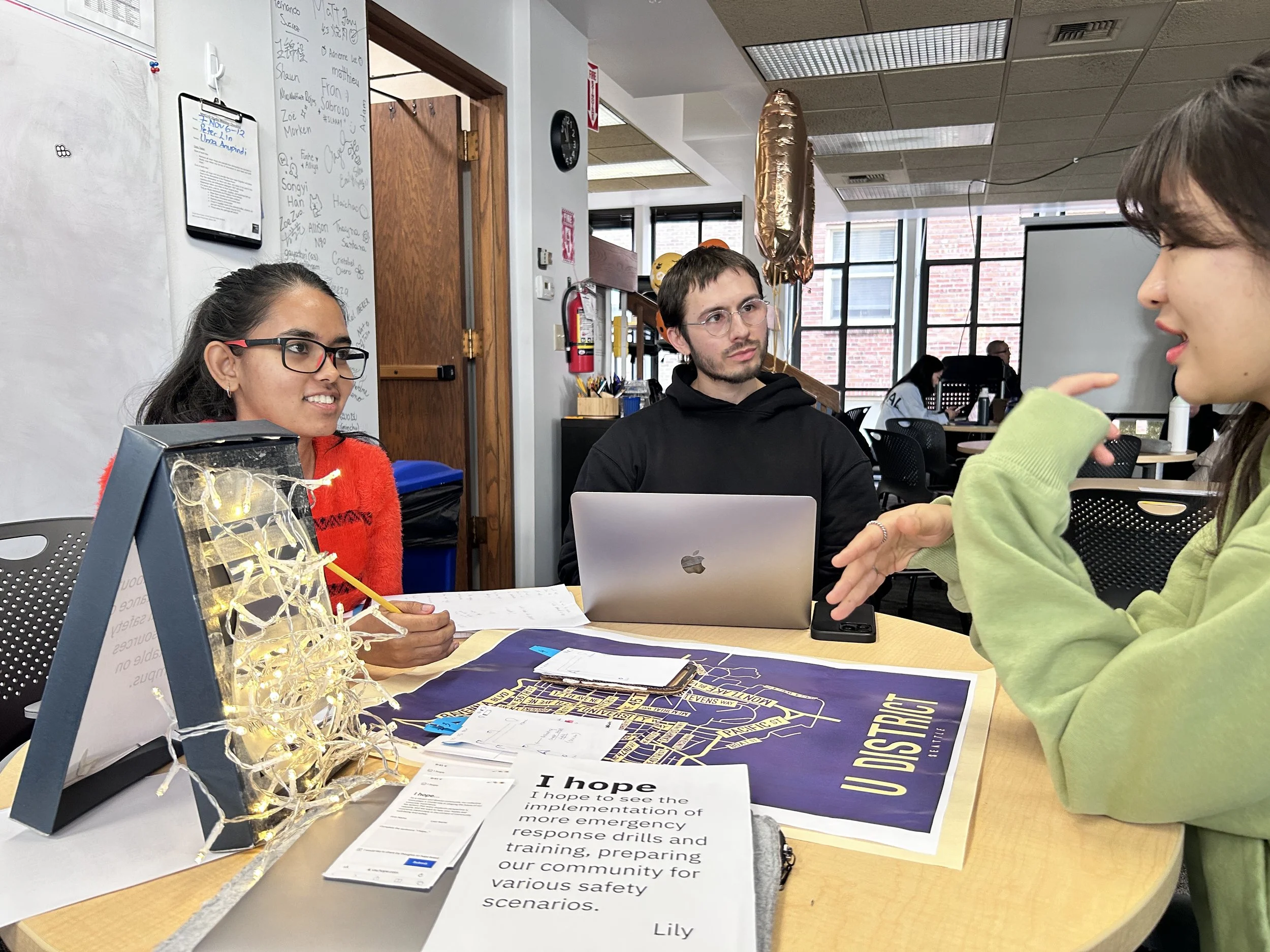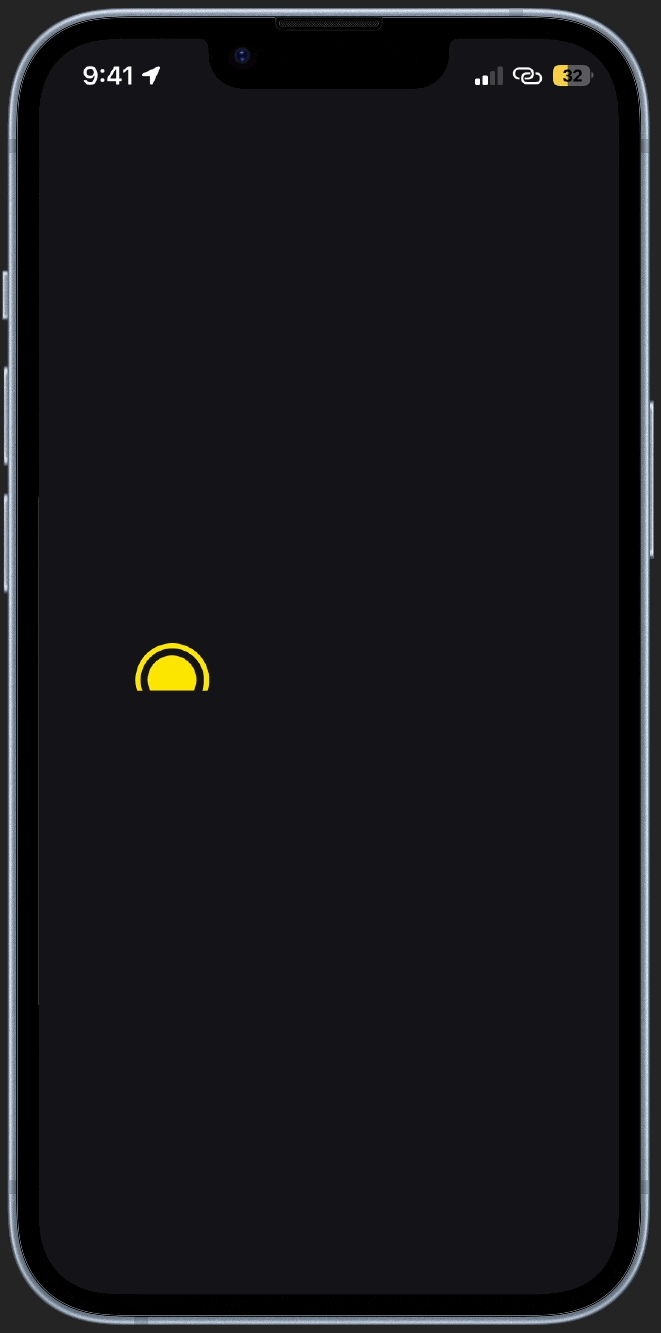Betterway
Signaling safer pathways
Time Oct 2023 - Dec 2023
Duration 10 Weeks
Tools Figma
My Role
UX/UI Designer-Craft interface prototypes from initial ideas,
Video editor-Efficiently presents the product to stakeholders
Team
Kritika Sony • Annie Song • Roman Meza • Joanne Chang
Project Brief
Betterway is a mobile application designed to enhance the sense of safety for University of Washington students, particularly during nighttime or in unfamiliar areas.
To gain comprehensive insights into students' prevailing threats and challenges, we conducted qualitative interviews with key stakeholders, including UW students and the University of Washington Police Department (UWPD).
I led the project from initial sketches to the mid-fidelity prototype, turning abstract ideas into practical solutions. This ensured that the app’s design effectively addressed the safety concerns we identified through our research.
Final Keypath Video 🔊
Where did we start? 🤓
Everyone was talking about safety issues
Early conversations with peers inspired us to investigate why students have negative experiences navigating the U District.
We wanted to help!
“I almost went to the University of Michigan for my graduate degree because we have to take night classes for UW HCDE program.”
“A homeless man screamed at me while walking on the road. We were just walking we were trying to find the store. And he did it as a prank because he was laughing after doing that.”
What’s the problem 🧐
Safety is the condition of being protected from or unlikely to cause danger, risk, or injury.
Safety here references the physical aspect of safety but we also wanted to highlight the mental and emotional states tied to the circumstances surrounding our sense of security.
What causes students to feel unsafe?
Because the systematic issues are hard to cope with our limited resources, we decided that our intervention space should focus on Conditions: Walking alone, Darkness, and Disconnection.
Initial design challenge
When we started tackling safety, we first thought about the physical side of things. We asked ourselves, 'How can we keep students safe from physical harm?' Then, we shifted our focus to their mental and emotional well-being, wondering, 'How can we help students stop worrying unnecessarily about their safety?' This led us directly to our initial design challenge:
“How do we ensure students feel safe without compromising their awareness of their surroundings?”
Research time 🤨
Even though crime rates have decreased from 2022 to 2023, the number is still significant for students to feel unsafe.
Source: Crime Dashboard from Seattle Police Department
A Secondary research
The perception of unsafety alone is enough to trigger identical physiological responses in individuals.
Your prefrontal cortex — the brain region associated with higher-level functions like problem-solving and decision-making — works like brakes, keeping the stress response quiet but ready to be unleashed at lightning speed…But the real upshot is what makes your brain unkink that hose and let the stress response surge: not an actual threat, but rather the “uncertainty of safety,” even when nothing is wrong. -SFAC, What Happens in the Brain When You Don’t Feel Safe
B Interviews with UW students
We conducted qualitative interviews with three UW students who have lived near the campus for less than a year. Through the interviews, we generated 4 insights below:
01 The perceived unsafety of the campus can potentially have a major impact on the students’ educational decisions
02 Perceived or actual threat is significantly associated with the tension between the students and the unhoused
03 Students were unsatisfied with or unaware of the current resources (alerts, apps, night services).
04 Students felt safe during the day, in their cars, and amid the social bustle, but unsafe in the dark and desolate urbanscapes.
C. Contextual Inquiry — the UW Police
As key stakeholders in campus safety, students and campus police are crucial. Recognizing this, we proactively reached out to the University of Washington Police Department (UWPD) to gain comprehensive insights into the prevailing threats and challenges faced by students.
We have a large unhoused shelter facility in Downtown Seattle - for anyone who wants to change their life around. However, since it has rules against drugs and alcohol, a lot of addicts do not go there and instead just live on the streets.
There are plenty of resources available. Did you not know? … Husky Walk, Husky Shuttle, Safe Zone app, security guards, the online reporting system…-Officer Stuart
Design challenge
After conducting interviews, we verified this was a real problem. We saw a disconnect between how students navigate their day-to-day activities across the campus and the many safety resources underscored by the UW Campus Police. We weren't sure what would be the best solution but we finally redefined our Design Challenge:
“How might we increase perceived safety for students commuting at night across the U District?”
Ideation 🤯
Navigating the problem space through ideation
We found that addressing safety is complex and multifaceted. There was a clear gap between students' daily routines and the many safety resources provided by UW Campus Police. Because these resources were spread out over different platforms, making them hard for students to find or use.
Decision making- Dot voting & mapping
To pick the best ideas, we ran a dot-voting session where everyone picked their top three choices and then talked about why they chose them. We also put together a diagram that linked the main safety issues we were tackling with the top ideas. Each idea got a score from 0 to 4, based on how often it seemed to solve one of those problems.
Physical Prototypes testing 😮
Focusing on functionality and form
Functionality and form were central considerations in our testing. Our primary focus was to explore the role through three distinct prototypes, each designed to examine its impact on participants' daily lives. Moreover, the varied aesthetics of the prototypes enabled us to gauge audience resonance and preferences effectively.
We conducted prototype testing with six participants residing in the U District area, employing the RITE methodology. Following this approach, we conducted debriefing sessions after every two testing sessions, allowing us to promptly iterate on the prototypes based on user feedback.
Rapid iteration from prototype testing
-
Safety integration augments navigation tools like Google Maps to filter routes by the amount of lighting, foot traffic, and travel history available.
Findings from testing
01 Participants prioritize taking the shortest route as the most important.
02 Participants familiar with their commute are less likely to use maps in real-time.
03 Visual cues in the map deliver useful feedback that makes participants feel safer.
04 Participants prioritize visibility or high foot traffic over saved travel history.
05 Participants found the integration useful when commuting in a new place. -
A beacon casts a soothing glow into the night and brings an interactive experience to the community. Students can seamlessly connect with the board by scanning the QR code, unlocking the ability to share their hopes
Findings from testing
01 All participants said that light helps them feel an increase in their perception of safety.
02 Participants didn’t see the connection between safety and the Hope Board.
03 Some participants said they wouldn’t stop by to read the message.
04 Ghosts, tied to participants’ superstitions, increased their perception of unsafety. -
A smart screen placed on bus stops is designed to share safety information and illustrations to spark a conversation about safety
Findings from testing
01 Participants gravitate toward more straightforward and actionable information.
02 Aesthetic images draw participants’ attention to the message.
03 Some participants connected the prototype to ads rather than safety messaging.
04 Some participants are scared at the bus stop when they commute alone.
Findings from prototype testing
Here’s how we made final decision 🤗
A. Insights guided the final iteration of our prototype
Having devoted substantial time to interviewing participants and establishing our design principles, we built a strong foundation and gathered supportive evidence that facilitated the development of our prototypes. This preparation led to fewer disagreements during the implementation phase.
B. Design principles informed our design process
We've established four design principles to ensure our final design aligns perfectly with our envisioned solution.
01
Ease of access
In moments that feel dangerous, users should feel like they have some level of control to buffer their sense of unsafety. A solution will be quick, fast, and simple so that students can reach it at a moment's notice.
02
Nurture interconnectivity
Feeling alone amplifies the extent to which people feel endangered, especially in the dark. A solution will nurture interconnectivity between users and their community so that they feel like they have a lifeline.
03
Cultivate safety understanding
Users feel insecure in situations where they feel unsafe, but the majority of circumstances are harmless. A solution will allow them to differentiate between personal fears and actual safety within their community.
04
Uplift the ecosystem
Unsafety encompasses many factors. A solution should appreciate the whole safety ecosystem, from false perceptions to individual experiences to systemic issues that derive from policy and legislation.
✨Leading the Creation of the Betterway from sketch to Mid-fi Prototype
Given the time constraints of the time, our focus was mainly on ideation, leaving little room for implementing ideas.
Despite the time pressure, I took the lead in developing our Betterway Mid-fi prototype on Figma, integrating insights we gathered from testing physical prototypes. To support asynchronous collaboration, I organized the Figma file with clear explanations for my teammates.
Final Design 😎
In the Betterway app, three primary user flow paths are designed to optimize the user experience. The user onboarding process begins with a well-designed landing page that effectively highlights the app’s main features. The navigation feature offers users the choice between routes that are well-lit or have high foot traffic, enhancing safety and convenience. Additionally, users have the capability to create safety beacons, which serve as alerts to the community about precarious situations occurring at specific locations and times.
Key User Flow 1 - Onboarding
Key User Flow 2 - Navigation
Key User Flow 3 - Create Safety Beacon
Impacts
User Testimonial: Empowering Safe and Efficient Navigation
“This is a very good solution. ‘High foot traffic’ and ‘well lit’ is exactly how I chose my path.
When I have to go from Odegaard to home, I can directly take 15th Ave, but I walk all the way to the well-lit road after it (and take the longer route) near the Population Health to go home just because it is more lit. And to know this, I had to live here for a long time before I figured this out.
If Betterway existed when I was new here, I would know all this info much before. And that would be a huge help. ”
Significant Attention: Amplifying Engagement and interaction within the MHCID community
Reflections & Future Work
Limitations of our solution
The open alert/notification feature in Betterway offers flexibility but also raises concerns about potential misuse.
Frequent alerts may inadvertently heighten user anxiety regarding safety. User interviews revealed a preference for ignorance in certain safety matters.
Limited alternative routes may exist in some scenarios, particularly when distances are similar.
The full potential of Betterway's beacon system will be realized with the establishment of a substantial user base.
Usability studies for Betterway with potential users will be conducted, with a commitment to ongoing design iteration.
Betterway provides a platform for governments, policymakers, UWPD, and stakeholders to identify poorly lit paths, areas with low foot traffic, and high-crime zones, facilitating informed action.
Initially designed for walking, Betterway has the potential for expansion to include other modes of transportation such as buses, trains, and personal vehicles.
Betterway's scalability extends beyond Seattle to encompass broader geographical regions, potentially encompassing the entirety of the United States and even global coverage.
Next steps and further potential
